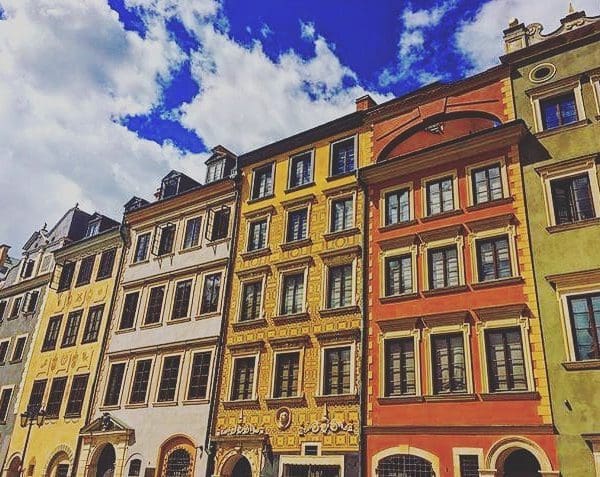Warsaw is the beating heart of Poland, and for some, of the whole of Eastern Europe. Known as the ‘Phoenix City’ after having risen from the ashes of so many ruinous wars, Warsaw – ‘Warszawa’ in Polish – is home to a stunning Old Town, an abundance of Polish art, nightlife, cuisine, culture and politics, and is an economic force to be reckoned with.
Skyscrapers, modern architecture and four star hotels all contrast sharply with the seemingly olde-worlde tourist hub of the city centre. You can truly believe you are in one of the most romantic cities in Europe when strolling along the cobbles of the Old Town of Warsaw, located in Srodmiescie district.
Restored, like much of Warsaw, after the bombing and destruction of the Second World War, it was previously established in the 13th century and, like many European old towns, is now on the UNESCO list of World Heritage Sites. You can find tourist memorabilia, great food such as sour ‘żurek’ soup in a bowl made of bread, along with generous helpings of Poland’s hearty pierogi dumplings at various restaurants, and countless photography opportunities among the alleys and squares of Warsaw’s Old Town.

Lazienki Park, along what is known as the Royal Route, is surely one of the most enchanting parks in Europe. Providing respite from the masses, it’s definitely worth a meander through on a sunny summer day. Bask in the shade of composer Frederic Chopin’s weeping willow tree, marvel at the Lazienki Palace on the Water, and watch out for the peacocks! Head south to Wilanow Park in Wilanow district for yet more contrasts in architecture and arts. The only Poster Museum in Europe chronicles, well, posters, Polish style, from the 1960s to the present. A few yards ahead, it is impossible not to be stunned by the Baroque-style canary yellow confection that is Wilanow Palace, where cultural events and concerts are still held today in grounds that have defiantly withstood both World Wars.
Almost every building in the city dates back only as far as the post-war era. The Warsaw Uprising Museum opened in 2004, in time to mark the 60th anniversary of the Uprising, during which Polish resistance attempted to liberate Warsaw from the Nazis.
The Jewish influence can still be clearly felt today. Remnants of the infamous Warsaw Ghetto can still be seen on Sienna Street, Zlota Street, and Walicow Street. During wartime, the area was built into a ‘small’ and ‘large’ ghetto. The two were merged by way of a wooden bridge, which today has an installation titled ‘Footbridge of Memory’. At night over this street, optical fibres light up the former handrails of this bridge.
The birthplace of Nobel Prize-winner and discoverer of polonium and radium Marie Sklodowska, aka Marie Curie can be observed as part of the Maria Sklodowska-Curie Museum on Freta Street. Traces of important history are all over Warsaw, so put on your walking shoes and get exploring.
The aforementioned pierogi dumplings rule Polish food, along with żurek soup. The one traditional Polish eating establishment everybody should try is any ‘bar mleczny’, or ‘milk bar’. It’s a kind of cheap cafeteria dating back to the 1890s. Inexpensive milk and vegetarian products formed the staple of menu dishes for workers that had no canteen of their own, and were preserved so as to serve poorer Polish people with basic meals ever since. Scattered all over the city and frequented by students and pensioners taking advantage of three course meals costing only 2-3 euros, they are not to be missed if you’re on a budget.
If the bright lights of the big city get too much, charmingly picturesque Krakow is a mere three hours away by train. It makes for a perfect place to connect on to the rest of Central Europe, or a base to explore the mountainous regions in Southern Poland.
Málaga Granada Seville Cáceres Madrid Ávila Segovia Ourense Santiago de Compostela